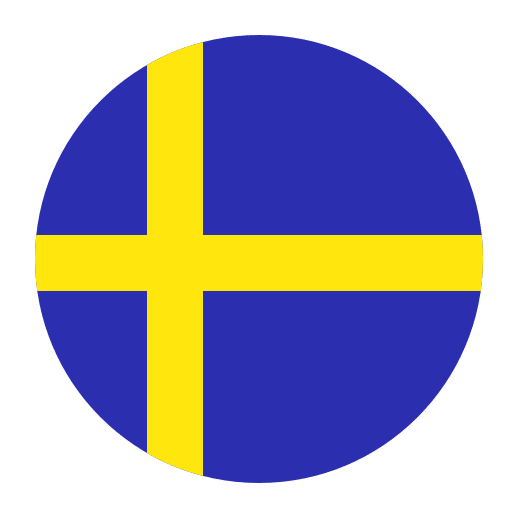Swedish, a North Germanic language spoken by about 10 million people, is known for its melodic intonation and relatively straightforward grammar rules. However, one aspect that often puzzles learners is the system of articles and definiteness. Unlike English, where the definite and indefinite articles are separate words (“the” for definite and “a/an” for indefinite), Swedish employs a more intricate system involving suffixes and separate words. Understanding this system is crucial for achieving fluency and accuracy in Swedish. This article aims to demystify Swedish articles and provide you with the tools to master the grammar of definiteness.
Understanding Swedish Articles: Basic Concepts
Swedish has both indefinite and definite articles, but they are applied in different ways compared to English. Let’s break down the basic concepts:
Indefinite Articles
In Swedish, the indefinite articles are “en” and “ett.” These correspond to the English “a” or “an” and are used to introduce non-specific nouns.
– “En” is used with common gender nouns, which constitute the majority of Swedish nouns.
– “Ett” is used with neuter gender nouns.
For example:
– “en bok” (a book)
– “ett hus” (a house)
Definite Articles
Definite articles in Swedish are more complex and are typically suffixed to the noun. There are two main forms: the simple definite form and the compound definite form.
Simple Definite Form:
– For singular common gender nouns, add “-en” or “-n” to the end of the noun.
– For singular neuter gender nouns, add “-et” or “-t” to the end of the noun.
For example:
– “boken” (the book)
– “huset” (the house)
Compound Definite Form:
This form is used when the noun is preceded by adjectives. In this case, the definite article is placed before the adjective, and the noun takes on the simple definite form.
For example:
– “den stora boken” (the big book)
– “det stora huset” (the big house)
Definiteness in Plural Forms
Swedish also has definite and indefinite forms for plural nouns, which add another layer of complexity.
Indefinite Plural Form
To form the indefinite plural, you usually add “-ar,” “-er,” or “-n” to the singular form, depending on the noun’s gender and ending. There are also some irregular forms.
For example:
– “böcker” (books)
– “hus” (houses)
Definite Plural Form
For the definite plural form, you add “-na” or “-en” to the indefinite plural form.
For example:
– “böckerna” (the books)
– “husen” (the houses)
Definiteness in Adjectives
When adjectives are used to describe a noun, the form of the adjective changes based on the definiteness and number of the noun.
Indefinite Adjective Form
When the noun is indefinite, the adjective takes on its basic form.
For example:
– “en stor bok” (a big book)
– “ett stort hus” (a big house)
– “stora böcker” (big books)
– “stora hus” (big houses)
Definite Adjective Form
When the noun is definite, the adjective takes on a special definite form, which is the same for both singular and plural nouns. This form usually involves adding an “a” to the adjective.
For example:
– “den stora boken” (the big book)
– “det stora huset” (the big house)
– “de stora böckerna” (the big books)
– “de stora husen” (the big houses)
Special Cases and Exceptions
While the above rules cover the majority of cases, there are some exceptions and special cases to be aware of.
Family Members and Titles
In Swedish, certain nouns that denote family members or titles often use a different form of the definite article.
For example:
– “pappa” (dad) becomes “pappan” (the dad)
– “doktor” (doctor) becomes “doktorn” (the doctor)
Geographical Names
Geographical names can also have unique forms. For example:
– “Sverige” (Sweden) remains “Sverige” in the definite form.
– “Stockholm” remains “Stockholm.”
Irregular Nouns
As with any language, there are irregular nouns that don’t follow the standard rules. These often need to be memorized individually.
For example:
– “män” (men) becomes “männen” (the men)
– “barn” (children) becomes “barnen” (the children)
Practical Tips for Mastering Swedish Articles
Mastering Swedish articles requires practice and exposure to the language. Here are some practical tips to help you get there:
Read Extensively
Reading Swedish texts, such as books, newspapers, and online articles, will expose you to the natural use of articles. Pay attention to how definite and indefinite forms are used in context.
Practice Writing
Writing your own sentences and paragraphs in Swedish can help reinforce the rules. Try to describe objects around you using both definite and indefinite forms.
Listen to Native Speakers
Listening to Swedish speakers, whether through podcasts, movies, or conversation, will help you internalize the natural rhythm and usage of articles.
Use Language Learning Apps
Many language learning apps offer exercises specifically designed to practice articles and definiteness. These can be a great way to get targeted practice.
Seek Feedback
If possible, get feedback from native speakers or language teachers. They can help correct mistakes and provide insights that you might not have considered.
Conclusion
Understanding the grammar of definiteness in Swedish may seem daunting at first, but with practice and exposure, it becomes more intuitive. By familiarizing yourself with the rules and exceptions, and by actively engaging with the language, you can master Swedish articles and enhance your fluency. Remember, language learning is a journey, and every step you take brings you closer to your goal. Happy learning!

